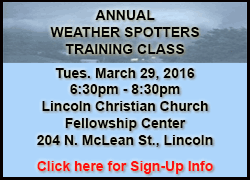|
 Let’s start with the basics. A blend of Kentucky bluegrass and
fine fescue (red or chewings, and not the tall fescue) is
normally used, and frequently there will also be perennial
ryegrass in a pre-mixed blend. The fine fescue is much better in
shade, and the perennial ryegrass will provide quicker cover.
The seeding rate is generally four pounds per 1000 square feet
in bare dirt seeding. Use two pounds per 1000 square feet in
over-seeding thin lawns. Of course this can run into some real
money when doing very large areas. Many rural seedings are done
more on the basis of a pound per 1000 square feet. There are
almost 44,000 square feet in an acre, so you can do the math on
this one. Let’s start with the basics. A blend of Kentucky bluegrass and
fine fescue (red or chewings, and not the tall fescue) is
normally used, and frequently there will also be perennial
ryegrass in a pre-mixed blend. The fine fescue is much better in
shade, and the perennial ryegrass will provide quicker cover.
The seeding rate is generally four pounds per 1000 square feet
in bare dirt seeding. Use two pounds per 1000 square feet in
over-seeding thin lawns. Of course this can run into some real
money when doing very large areas. Many rural seedings are done
more on the basis of a pound per 1000 square feet. There are
almost 44,000 square feet in an acre, so you can do the math on
this one.

Fertilizer is always an area of many questions. The place to
start is a soil test. This will tell you where you are starting
from. Basic soil test levels for phosphorus, potassium, and soil
pH should be in the neighborhood of 40, 350, and 6.1
respectfully. Phosphorus and potassium are on a pound per acre
basis. This must be considered if you use labs that report in
parts per million, which will give numbers half as large. These
numbers will provide a great environment for grass. Grass will
really grow in very poor conditions, but it certainly won’t have
that manicured lawn “look” many strive for. Lacking a soil test,
or being at recommended fertility levels, general maintenance
applications provide a pound each of nitrogen, phosphorus, and
potassium per 1000 square feet of lawn area in May and again in
September. Of course, it is getting increasingly difficult to
find any lawn and garden fertilizers with phosphorus in them.
Really lush lawns will usually have twice as much nitrogen
applied in a season, but split among four applications. It
frequently requires water during the summer applications.
Fertilizer prices remain high.
If you decide to try seeding this spring, remember a couple of
things related to weed killers. Number one, you can’t use
crabgrass preventer in the same season as you put down seed. The
crabgrass preventer doesn’t know the difference between grass
seed and weed seeds. The second rule is to mow the new seeding
at least three times before trying any broadleaf weed killer.
Generally this means spring broadleaf control doesn’t happen
when you seed in the spring.
[to top of second column] |

The end result is if you seed in the spring, you control
weeds in the fall. Seed in the fall, and you control weeds and
crabgrass in the spring. If you do plan to use a crabgrass
preventer, time it so it is on about the time the forsythia
blooms. This would be the approximate soil and air temperature
needed for the crabgrass to germinate. April 1 is a good guess,
but this date can vary widely with the weather. This year may be
a bit earlier based on progression of forsythia. Many crabgrass
preventers also only last for four to eight weeks, so plan on
repeating the application in June anyway.
To Do List
Watch roses to determine when to start uncovering and pruning.
Many recommend doing your pruning chores when forsythia is in
bloom. Pruning roses too early may lead to further dieback.
Also, if you haven’t uncovered strawberries, keep an eye on
them. They should be uncovered when you see green leaves under
the straw, and definitely when you see yellow material – that
means you are just a little late. Keep the straw handy in case
you need to re-cover them.
[By JOHN FULTON, COUNTY EXTENSION
DIRECTOR SERVING LOGAN, MENARD, AND SANGAMON COUNTIES]
 |